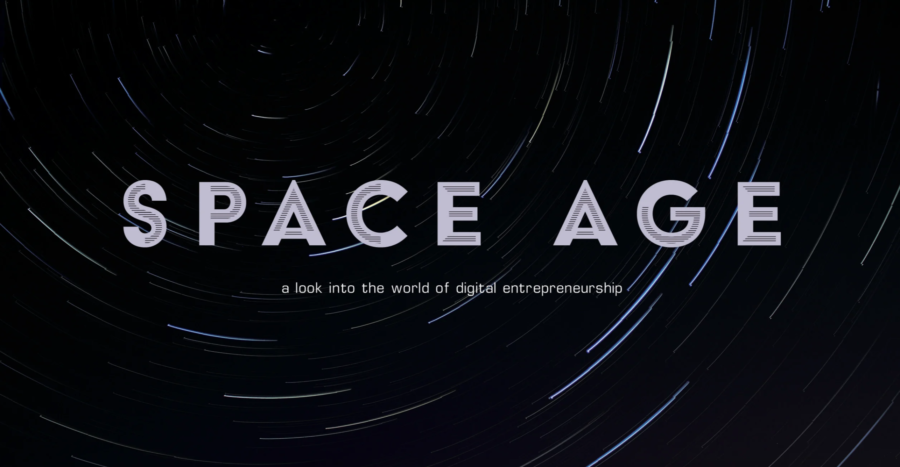To understand the complexity and depth of Victor Boschini, you’d first have to understand this: He doesn't take himself very seriously.
Ask him, and he’ll tell you what he thinks: He’s not very smart, he doesn’t reflect on much and he doubts the university will ever reach the same academic stratosphere as Harvard, which, to him, is a good thing because he hopes it never will. He doesn’t own an iPod or “whatever those things are called.” He works. He spends time with his family. He travels. He watches Jeopardy.
Even as the university’s chancellor, Boschini teaches a freshman education course. He answers his own emails. He meets with students.
On some nights when the rest of the third floor of Sadler Hall is emptied out, Boschini will plug his phone into a docking station by the window in his office and put an eight-song playlist on repeat. Connie Francis and Kid Rock echo through his office space.
And, really, it seems odd Boschini would even hang around Sadler that late at night. The campus administration building, as renovated as it might be, is in fact the “only thing more boring than me,” he called it.
But even Boschini knows boring doesn’t build buildings, nor does it open financial floodgates. Boring doesn’t re-energize an alumni base, and it doesn’t attract donors.
Boschini has seemingly done all of the above since coming to the univeristy in 2003.
“The first thing everybody is surprised at when you meet him is that he’s so young and upbeat,” said Bud Kennedy, a columnist at the Fort Worth Star-Telegram.
Since Boschini's arrival, the campus has undergone a physical transformation that rivals any other period of construction in the university’s 139-year history.
All but two residence halls have been renovated, and the sea-of-pavement parking lot spanning from Stadium Drive up to Frog Fountain has been replaced by a new student union and the Campus Commons.
The football team opened a new stadium this fall, and construction on a new Greek village is ongoing. Plans for an Intellectual Commons by the library on the east side of campus are already in place. More students live on campus, and eventually every student will be able to.
The university has changed, and Boschini, who will simply say he’s been along for the ride, has been at the forefront of mostly every major development.
So, yes, Boschini might claim to be boring, un-revolutionary and over-simplistic, but the changes to campus and the changes to the academic side of the university, have been anything but.
To understand the impact of Boschini, you’d first have to understand the era before him.
“Chancellor Boschini is a victim of good timing,” said Don Mills, the former Vice Chancellor of Student Affairs who transitioned last year into a faculty position in the School of Education.
Mills has been at the university since 1968 when he attended Brite Divinity School. Mills, a Harvard graduate, ended up staying at the university serving in some administrative capacity over the next 40 years.
“When I first got to TCU, it was a very regional West Texas school,” Mills said.
Over the course of the next 20 years, the university made more of an effort to expand academically, raise admission standards and recruit nationally, Mills said. The changes being made weren’t as flashy as those in the post-World War years when the university expanded physically, building residence halls and academic buildings across campus.
Although few buildings were going up, the university wasn’t standing still, Mills said.
“I think [TCU] was moving, but it was in many ways moving under the radar,” Mills said. “There were lots of things happening – not as flashy as facilities are and not as broad based, but I probably wouldn’t have stayed here if I thought TCU was stagnant.”
Something else happened during the 1970s – the university began expanding its financial base.
In 1979 when Bill Tucker was sworn in as chancellor, the school’s endowment sat at around $52 million, according to the Associated Press. When Tucker retired in 1998, the school’s funds had ballooned up to $558 million, more than 10 times the amount it was 18 years earlier.
“Chancellor Tucker had two priorities: Improve the faculty by improving the salaries and increase the endowment,” Mills said. “He knew TCU could never achieve national attention without a stronger financial base.”
But that meant having to save, save and save some more. Building dorms and academic halls weren’t completely stalled, but construction projects were limited, Mills said.
“[Tucker] knew if he spent [money] building buildings, then he couldn’t build up the endowment,” Mills said. “He was a good fundraiser, and he was very conservative in expenditures of university funds.”
With that financial footing in place, the university was able to build the Tom Brown-Pete Wright apartment complex in 1998. The University Recreation Center followed shortly thereafter, marking the beginning of the school’s shift away from its days of ultra-thriftiness.
“That sort of helped people to see how a facility can change the student experience,” Mills said. “People began to think more broadly about what we can do with the space we have.”
Boschini saw that same opportunity.
Shortly before accepting the job, he and his wife, Megan, took some time to visit Fort Worth and get a closer look at the campus.
“I rented a car, drove to the union and parked there –probably illegally too, I don’t know – and I just sat in the old Main and kind of talked to people,” he said.
Boschini saw the obvious (“The first thing that hit you was that parking lot,” he said.), but he saw the potential, too.
“We both thought, ‘Oh, my gosh, every element is in place for this place to really skyrocket,'” he said.
As Boschini sat in the old student union that day, he would be on the brink of a new career and the university would be on the edge of a decade-long construction project, a constant overhaul of renovations and new buildings that would leave the campus looking and feeling different.
But that potential, which is continually coming to fruition, was perhaps more a product of what happened under the years of Tucker as chancellor than what was envisioned by Boschini or anyone else on campus at the time.
Tucker laid the foundation.
“If Tucker didn’t do that, Boschini couldn’t do what he did,” Mills said.
But not just anyone could have led the university the way Boschini has, especially considering the construction, Mills said. Boschini was driven enough to succeed.
“I wouldn’t call the chancellor a planner in the traditional sense,” Mills said. “But he’s very strategic. When he has a goal that he wants to accomplish, he sets out and says, ‘OK, what do I need to do, who do I need to get on my side to move forward and accomplish this goal?’ That’s why he accomplishes so much."
Mills used the development of the Campus Commons as an example.
When the idea first arose, there was some debate among university decision-makers as to how to go about carrying out a massive construction project right in the middle of campus. Some people wanted the building phases to be staggered, closing off the area portion-by-portion over the course of several years.
Boschini made the decision to go all in.
“He said, ‘Nope, let’s just do it all at once. Let’s just be torn up for three years and then we’re done,’” Mills said.
The response wasn’t entirely warm.
“I think when the Chancellor first got here, he was reluctant to take a giant step,” Mills said, “because there was some push back from the trustees. But once he saw the logic of it and he tested the idea with various folks, and once he became convinced it was right, he set about to make the trustees understand what we wanted to do, and why we wanted to do it.”
Boschini’s plan might have been seen by some as a risk, but it worked, Mills said.
“For three years, the middle of the campus was unavailable to students, and he got some criticism about that,” Mills said. “But it was the right thing to do.”
Along with the joy that comes from being chancellor, Boschini also deals with the pain.
Boschini got the call on Feb. 15 around 4 a.m. It was happening.
Thirty minutes later he was in his office discussing with his cabinet how they would address the 18-student drug bust happening that day. Arrests were being made as they met. He didn’t go home until after midnight, answering calls from parents and handling media requests.
“I’m a big believer in transparency, and that was a real test for me,” he said. “Do I walk the walk? Do I talk the talk? And so we just felt we had to be open about it.”
The arrests turned Boschini’s stomach.
“I was bitterly disappointed about it,” he said. “I had diarrhea for days. I had a stomach ache for two weeks.”
Megan Boschini could see the hurt in her husband.
“I think the hard part is that all those kids have families,” Megan Boschini said. “It just doesn’t affect the kid – it affects the whole family. All of that hits home. It could be anyone. I think he feels all of those kids are his kids.”
On top of that, Victor Boschini and the rest of the administration had to handle criticisms that too much was made of the situation and that the university was almost being too transparent causing the media to swarm around the school with coverage when, really, campus drug stings occur all over the country.
“I think that’s been the only disappointment,” Kennedy said. “It was coming off the heels of other scandals, and TCU was worried about being as open as possible. The university called too much attention to things the university didn’t know or control.”
Boschini heard the criticisms at the time.
“If one person is selling drugs, it’s one too many,” he said. “Does it happen at every campus in America? Maybe. But does that make it right? No.”
Boschini decides where he is taking the university while imagining where he thinks it should go and why he thinks it will get there.
“Will we ever become elite academically? I don’t think so, and I hope not,” he said. “I think other schools already have that niche in America, and that’s not our niche.”
Instead, the university focused creating an experience and molding that experience into something special, Boschini said.
“I think what we’ve done these last 10 years is try to make the experience on the ground for the person with their feet on the ground — the freshman, the sophomore, the junior, the senior – better at TCU,” Boschini said. “Here’s when we really know if that works – when [students] are 40. Because when you’re 40 and you’re willing to give back to TCU, that means this worked.”
Despite the significant strides that the university has made during Boschini's tenure, he still sits up at night with worry.
“I’m a big worry-wart,” he said. “I worry about everything.”
Lying in bed at night, he stresses over whether there’s enough faculty or if the sidewalks criss-crossing through campus are clean or if the flowerbeds are blooming.
He stopped to grin.
“But I’m not very introspective,” he said. “I’m not very smart. I really mean that. I don’t spend a lot of time thinking about all that kind of stuff or examining my navel.”
And so the progressive came back into the picture, the let’s-go-get-it, keep-moving-forward mantra that has been so definitive of Boschini’s tenure at TCU.
He had to keep moving ahead.
“I’m more like, ‘what’s going on tomorrow?’ and, ‘let’s make this happen,’” he says. “I’m more like, apologize for my mistakes and move on.”
To understand the opposite ends of Boschini’s world, you’d first have to see them intertwined together.
Earlier this fall, a group of first-year students trudged up to the third floor of the University Union. They lugged along their backpacks as a late-September sun flashed across the Campus Commons and peeked its way through the large glass windows on the building’s east side. One by one, they filtered up the steps and filed into the Chancellor’s Dining Room.
The students marveled at the long, white-clothed table in the middle of the room. They pointed at the engraved silver platters encased inside the glass cabinets along the wall.
Boschini was holding a brunch for his freshman education class, a seminar on the American University Experience.
“I always say I got into [education] because I like seeing students,” he said. “But you could never see a student in my job if you wanted. You could totally work it out that way. And actually, it would be a lot easier and a lot lest time-consuming and a lot less messy. But why would I do this job?”
Shortly after the students settled in to eat their meals, Boschini called a group to the head of the table – they had a presentation to give. Ironically enough, part of their PowerPoint involved a class debate over the legalization of marijuana.
The two sides exchanged points for 30 minutes, then promptly asked Boschini to pick a winner. (For the record, Boschini chose the team arguing to keep it illegal. He is still a chancellor, after all.)
“It’s kind of weird at times,” said Mitch Titsworth, a freshman in the class. “You would think he would have his own agenda on it. But he’s so open. It’s a fun environment.”
Fun sometimes means holding class at the zoo or inside Boschini’s luxury suite at Amon G. Carter Stadium, where the group met the week before.
Boschini doesn't shut off communication once class is over, either.
“He was on a conference call, and I kind of waved at him and he walked over to me to shake my hand and talk to me while he was still on the phone,” said Dominic Moreth, who’s also in the class.
Titsworth and Moreth were seemingly carbon copies of Boschini’s student experience blueprint. They were engaged with him, and he was engaged with them.
A few days after the class, Boschini explained his goals again. As he talked about the university knowing its niche, it became clear he was a man who saw both the good and bad in the school. He certainly was not blinded by success.
But he saw the potential, too. He saw the chance to be unique. He saw the chance to stand out.
“I don’t want to be Harvard,” he said. “There already is a Harvard. I don’t want to be Rice. There’s already a Rice. And I think those are great schools.”
He paused for a moment before delivering the pitch he’s been selling for nearly a decade.
“But I think we have something different here,” he said. “Something better, actually.”






